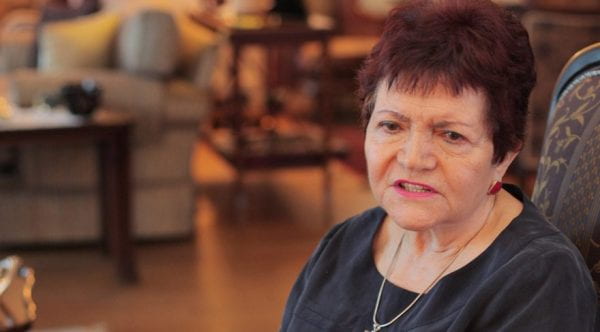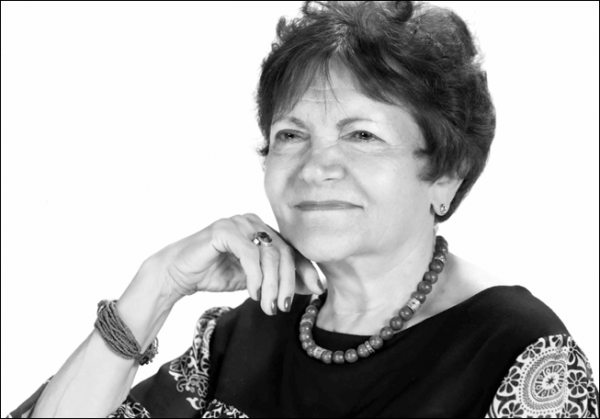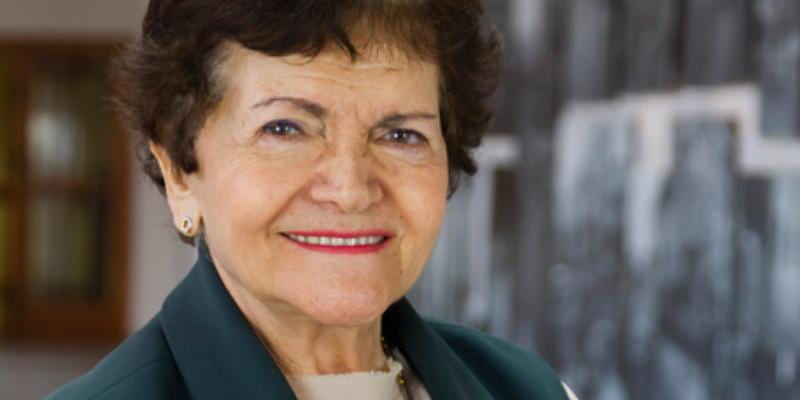Çiğdem Kağıtçıbaşı (1940-2017) was a psychologist who studied family structures while considering culture as a primary variable. The common belief at the time she did her work was that as non-Western societies urbanize, the family structures will converge towards Western family structures. Kağıtçıbaşı disproved this and focused on showing that children who grow up in these family structures are not deficient when compared to the Western family structure. Her work inspired many Western psychologists to take issues that were traditionally studied with a Western lens and instead study them at an international level. Thus Kağıtçıbaşı popularized what became known as cross-cultural psychology.
Kağıtçıbaşı first developed an interest in this topic while she was pursuing her graduate studies at the University of California, Berkeley in psychology. During her time at Berkeley she was disappointed with how psychology went about examining family structures. This was due to the assumption that the family studied was (what I will refer to in this post as) a typical Western family or the family model of independence (this is what Kağıtçıbaşı calls it in her papers). This Western archetypical family is based on the idea of a nuclear family where one is close with their immediate relatives and the rest of the family is much more separate. Intergenerational independence is valued and autonomy, privacy, and realizing your own potential are considered important concepts for children to develop. Psychologists studying this family structure find that early separation and focus on developing as an individual are key to psychological development. However, they concluded that this is the best way for all children to develop.
The obvious question to ask after seeing the above paragraph is what about the rest of the world? Before answering why Western psychology did not study these societies, we first explain what we mean when we refer to the typical pre-industrialization non-Western family (Kağıtçıbaşı refers to non-Western societies as the Majority world due to the fact that they contain more people than Western societies. We will follow this convention.). This family structure will also be called the family model of total interdependence. Here, each generation of the family depends on each other to help meet the economic needs of the whole extended family. There is also a great emphasis on the whole family being emotionally close. Individuality in children is seen as a threat because the older generations will eventually need the full support of the youngest generation. Then the goal in raising children is for them to grow up as obedient as possible.

Çiğdem Kağıtçıbaşı. Source: Sosyal Bilimler 2017.
One of the major reasons Western psychologists did not study these cultures at the time was due to social Darwinism in the form of the modernization perspective. Kağıtçıbaşı describes it as follows “The modernization perspective claims that intergenerational dependencies (family interdependence) should decrease and separation/ nucleation within the family should increase with socio-economic development, pointing to a convergence toward the Western nucleated independent family.” (A Model of Family Change in Cultural Context, page 4). Here we see that culture was viewed as a secondary variable. Implicitly within this, we see the view that it is not as important to study family structures in non-Western societies as they are formed primarily due to economic pressure. The modernization perspective spread through textbooks that similarly downplayed the role of culture in family structures.
After graduate school, Kağıtçıbaşı moved back to Turkey and shortly began one of her career’s most important studies. It was a nation-wide study in Turkey (part of a larger 9 country study) on the value of children mainly to investigate the reasons for childbearing in these countries. Before presenting this study, it is worth noting here that we will be using information both from Kağıtçıbaşı’s academic papers and her book (Family, Self, and Human Development across cultures). In the book, Kağıtçıbaşı posits that parents raise their children in a way that is optimal according to their values or society. As an explicit example, as urbanization increases in the Majority world, parents focus less on filial piety and more on the individual growth of the child. Kağıtçıbaşı goes on to explain that this is likely due to the fact that the children need to develop more individually to get a career and support themselves. We will present explanations of this type as it reflects how Kağıtçıbaşı’s views psychology and it is a view that she became more certain of as her career progressed.
We now return to the Value of Children study. Its goal was to find reasons and patterns in childrearing. To do this, families were interviewed on the values they attributed to their children. These interviews consisted of both multiple choice and open-ended questions. The values were put into three categories: economic value, psychological value, and son preference. Economic value has to do with the material benefit that the children bring both while young (for example doing work in a family business or doing chores) and while in peak working age (providing support for the older generations and continuing the family business). Psychological value has to do with the love and pride that the child brings the parents. The Value of Children study focused how these values vary depending on different family demographics. For example, in the majority world before urbanization, the economic and psychological value of children were both salient factors. However among more urban families, the economic value of children decreased.
Kağıtçıbaşı was most interested in the above pattern as she could now study family structures of urbanizing Turkish families and compare her results to Western families as the modernization perspective predicts they should be similar. However, She found that there was a different type of psychological value of children between Western and non-Western cultures. In particular, there was an additional value of children due to them being emotionally close to the whole family. Then although the economic dependency decreases, emotional interdependencies do not. Upon further study, Kağıtçıbaşı found that the Modernization hypothesis is not correct as these urbanizing Majority world families have a third type of family structure, which we will call the typical urbanized Majority world family or the family model of emotional interdependence.
Kağıtçıbaşı’s work was interesting as she conducted a study in psychology but collected data using interviews or surveys that are often more suited for sociological studies. This led to an increase in interest in studying the role of culture in psychology through large multinational studies. Also due to increased immigration, Western psychologists were able to study ethnic communities without any travel. Then smaller scale studies on individual immigrant communities using these methods became more popular as well.
We will now describe the family model of emotional interdependence. As emotional interdependency is valued, Parents still strive for closeness with their children. Compared to a Western parent, they are more involved with the child, and are often more authoritative. They also emphasize the importance of the whole family so the nuclear family concept does not hold. However, there is still an element of autonomy because the child needs to develop the skills to do tasks such as school or specialized training for jobs. Children raised in these sorts of family tend to find meaning in their achievements both individually and as something the whole family can take pride in.
Kağıtçıbaşı had more interests beyond describing the differences between urbanized majority world family structures and Western family structures. She also wanted to show that the self that arose from this family model of emotional interdependence (which we will call the autonomous-related self) was not deficient compared to the self from the family model of independence. More specifically, Western family structures put a lot of emphasis on developing autonomy in children mainly through early childhood separation with the parent. It could be argued that the autonomous-related self does not develop autonomy as well because of their focus on connecting with parents.

Çiğdem Kağıtçıbaşı. Source: European Association of Social Psychology.
However, there is evidence that this is not the case. Studies done in China, Korea, and India show a positive correlation between autonomous behavior and close emotional relationships with family (Lin and Fu (1990), Cha (1994), Sinha(1985)). A similar study was done with ethnic minorities in the U.S and a similar result was obtained (Kim et al. 1998). Then the people developing in this type of family are not deficient compared to the Western family structure as they are not missing out on individual development or emotional closeness with their parent. In fact, researchers in China and Turkey found depression to be linked with early separation from parents (Steinberg and Silverberg (1986), Aydin and Oztucu (2001)).
This leaves room to argue, as Kağıtçıbaşı does, that both autonomy and relatedness are essential for ideal human development and so the autonomous-related self is in some sense optimal as the independent self ignores the relatedness component. She goes further to say that for this reason, it would be better if the family model of emotional interdependence was taken up globally. This has not happened currently although there are some studies that show that in certain postmodern societies in Europe this model is becoming more popular (Inglehart, 1991).
I would also like to highlight that Kağıtçıbaşı wanted to apply these ideas about family structures to help disadvantaged communities in Turkey. Although the majority world is modernizing, there are still educational issues among poorer children. One way to help these educational issues is to have early childhood development programs (ECDs). In the 1980’s there were many ECDs in the Western world, but very few in the Majority world. In regions such as South Asia and sub-Saharan Africa, less than 10% of children received some form of ECD. Due to these low rates, there was a push to develop ECDs in the Majority world. Kağıtçıbaşı developed an ECD that focused on promoting the family model of emotional interdependence and led a longitudinal study on its efficacy. This may seem confusing as I said earlier that urban Turkish families usually had a family model of interdependence. However, these families were much poorer than average and so they usually had the family model of interdependence.
The ECD was held in five low-income neighborhoods of Istanbul where factories employed many women to run day cares. Kağıtçıbaşı developed an 18 month long training program for a randomly selected group of mothers whose children were 3-5. The training focused on giving mothers school preparatory material to teach their children (this particular material was originally developed for a U.S. based program). It also included a mother training group with group discussions about the needs of growing children and how best to communicate with them. The goal here was to try to create an environment where more families could move towards the family model of emotional interdependence. As such, these group sessions focused on close-knit family ties and emotional relatedness while also introducing the benefits of more independent children.
I think it is worth comparing this to the work done in Hull House. The major similarity here is focusing on using a field of study to help disadvantaged communities rather than studying it purely academically. However, Kağıtçıbaşı was focused more on applying theory she had made rather than helping the community while doing academic work. And although both end up educating the community, Kağıtçıbaşı is more focused on setting a foundation that schools will build on while Hull House is directly educating the community. So although the spirit of using a social science to help the community is there in both cases, the execution is different as Kağıtçıbaşı had to work under the constraints of an ECD and the focus of her project was the ideas in psychology.
Four years after the start of the training, children whose mothers received such training were found to perform significantly better academically than children whose mothers did not receive training. What was more interesting was that the family models of mothers with training shifted towards the model of emotional interdependence. The parents in these families interacted with their children more and more favorably and they valued autonomous behavior more. Then intervention programs can bring family structures closer to the model of emotional interdependence and this is beneficial to the families involved.
The results here were so successful that mother training groups were carried out as a public service by women groups and parent-teacher associations. After seeing similar successes here, the Turkish ministry of education again employed Kağıtçıbaşı to develop further training groups. In 1993, Kağıtçıbaşı made some modifications to the cognitive training portion and made some logistical changes to require less of the mother’s time. By 2005, this program had reached 230,000 Turkish women and even saw some use in Europe(France, Belgium, Germany) with Turkish immigrant families and also in Jordan, Egypt, and Saudi Arabia. So through her work, Kağıtçıbaşı was able to help many people throughout Turkey and other countries. This work again popularized a new method. Psychologists applied cross-cultural ideas to issues such as ethnic relations and development of communities.
This highlights Kağıtçıbaşı’s commitment to helping her community with her work. She continued to apply her ideas in psychology to communities in need, working on projects such as radio broadcasts, intervention programs for adolescents, and she continued to do consultative work for the Turkish Ministry of Education until her death in 2017. She was also active in developing the community around cross-cultural psychology. She acted as an executive council member of the International Association of Cross-cultural psychology from 1982-1994 and as the president from (1990-1994). She also mentored many young psychologists. Furthermore, many of the questions about childrearing and family structures that Kağıtçıbaşı raised are still active research topics. For example, psychologists studying how cultures conceptualize autonomy find that certain conceptualizations are incompatible with relatedness. This could be the cause of the difference between the Western and Majority world that Kağıtçıbaşı observed.
About the Author:
Ajay Mitra is a 4th year Mathematics major at the University of Chicago who grew up in Hamden, Connecticut. He hopes to pursue a PhD after graduating.
References:
Featured Image: Cigdem Kagitcibasi. Source: Bluestocking.org.
Cha, J. H. (1994). Changes in value, belief, attitude and behavior of the Koreans over the past 100 years. Korean Journal of Psychology: Social, 8, 40-58.
Lin, C-Y. C. & Fu, V. R. (1990). A comparison of child-rearing practices among Chinese, immigrant Chinese, and Caucasian-American parents. Child Development, 61, 429-433.
Sinha, S. R. (1985). Maternal strategies for regulating children’s behavior. Journal of Cross Cultural Psychology, 16, 27-40.
Mogey, J. (1991). Families: Intergenerational and generational connections-conceptual approaches to kinship and culture. Marriage and Family Review, 16, 47-66.
Inglehart, R. (1991). Changing human goals and values: A proposal for a study of global
change. In K. Pawlik (Ed.), Perception and assessment of global environmental conditions and change. Pagec: Report 1.
Kagitcibasi, C. (2002) A model of family change in Cultural Context. Online Readings in Psychology and culture. Unit 6, subunit 3, article 1
Kagitcibasi, C. (1982). The changing value of children in Turkey. Honolulu, Hawaii: EastWest Center, Publ. No. 60-E.
Kagitcibasi, C. (1990). Family and socialization in cross-cultural perspective: A model of change. In J. Berman (Ed.), Cross-cultural perspectives: Nebraska symposium on motivation, 1989 (pp. 135-200). Lincoln, NE: Nebraska University Press.
Kagitcibasi, C. (1996). Family and human development across cultures: A view from the other side. Hillsdale, NJ: Lawrence Erlbaum.
Kagitcibasi, C. (1996). The autonomous-relational self: A new synthesis. European Psychologist, 1, 180-186. 9

